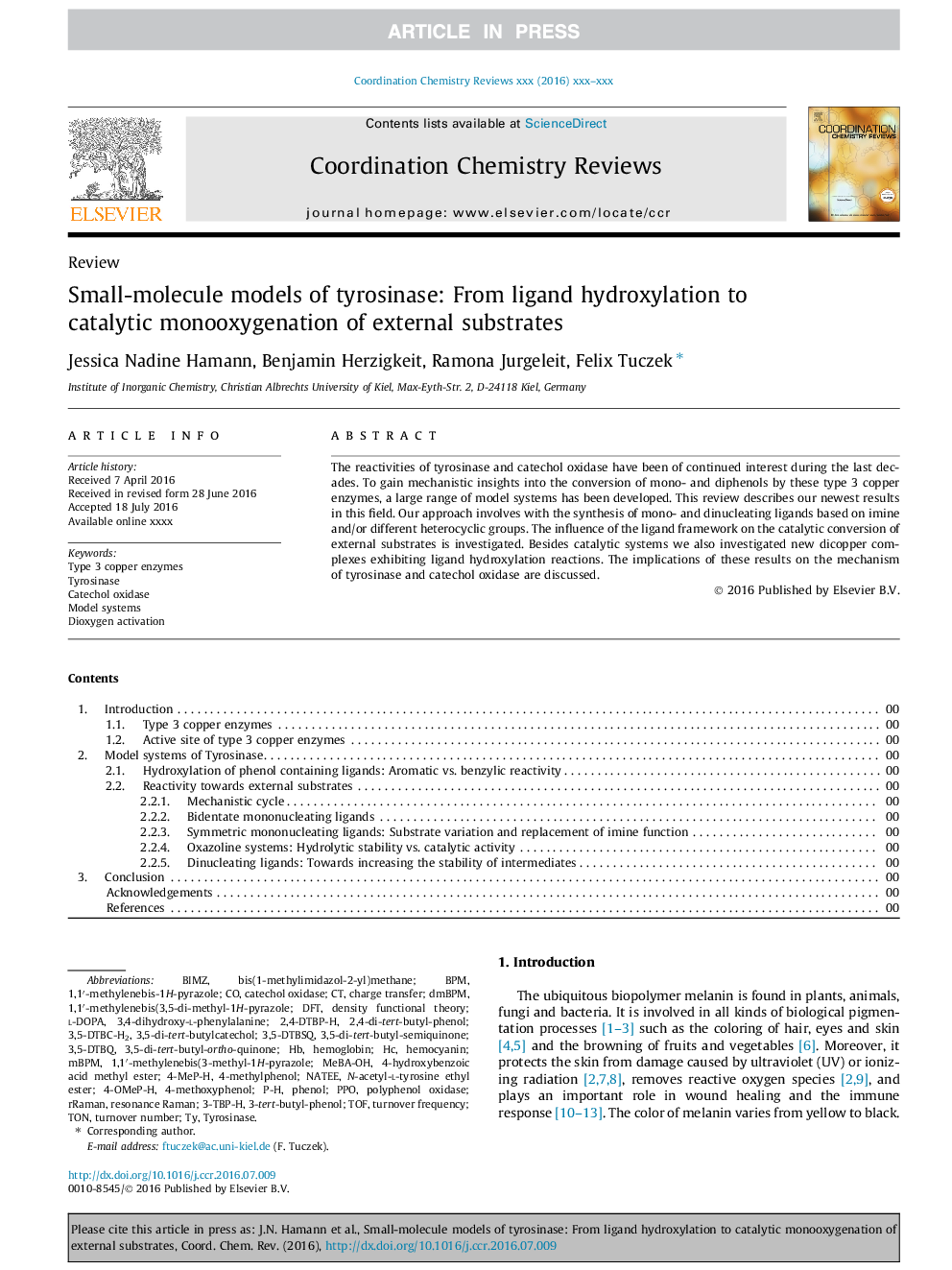| Article ID | Journal | Published Year | Pages | File Type |
|---|---|---|---|---|
| 5150932 | Coordination Chemistry Reviews | 2017 | 13 Pages |
Abstract
The reactivities of tyrosinase and catechol oxidase have been of continued interest during the last decades. To gain mechanistic insights into the conversion of mono- and diphenols by these type 3 copper enzymes, a large range of model systems has been developed. This review describes our newest results in this field. Our approach involves with the synthesis of mono- and dinucleating ligands based on imine and/or different heterocyclic groups. The influence of the ligand framework on the catalytic conversion of external substrates is investigated. Besides catalytic systems we also investigated new dicopper complexes exhibiting ligand hydroxylation reactions. The implications of these results on the mechanism of tyrosinase and catechol oxidase are discussed.
Keywords
N-acetyl-l-tyrosine ethyl ester4-MethoxyphenolTOFPPO3,4-dihydroxy-l-phenylalanine3,5-Di-tert-butylcatechol4-MethylphenolDFTl-DOPACharge transferbpmturnover numberTONTyrosinaseResonance RamanModel systemsTurnover frequencyDioxygen activationPhenolDensity functional theoryHemocyaninHemoglobinPolyphenol oxidaseCatechol oxidase
Related Topics
Physical Sciences and Engineering
Chemistry
Inorganic Chemistry
Authors
Jessica Nadine Hamann, Benjamin Herzigkeit, Ramona Jurgeleit, Felix Tuczek,
